#tignons
Explore tagged Tumblr posts
Text



“Lady Java’s Tignons” from The Color Pynk: Black Femme Art for Survival by Omise’eke Natasha Tinsley (2022)
image text under the cut
Viewing the world through rose-tinted glasses shaped like butterfly wings, edged in rhinestones, and fringed with hanging beads, Sir Lady Java identifies herself to interviewer Pasqual Bettio in 2016: “We’re called transsexuals, basically, because I’m in a trance about my sex.” Born in New Orleans in 1940, Java—who transitioned with family support at a young age—was a mainstay of Los Angeles’s nightclub scene in the 1960s and ’70s. Billed as the “World’s Loveliest Female Impersonator,” she “appeared in shows all over the West Coast with such personalities as Nancy Wilson, Redd Foxx, Lena Horne, Louis Jordan, James Brown, Isaac Hayes, Joe Tex, Ray Charles, B.B. King, and Quincy Jones,” according to the brochure “Who Is Java?”
As she rose to prominence, she became a target for police harassment. In 1967, the LAPD raided the Redd Foxx Club to arrest her for violating Rule No. 9, an ordinance that prohibited trans women from appear- ing in public with less than three articles of male clothing. But when Java—performing in a bikini, bow tie, slim men’s wristwatch, and tiny socks—proved unarrestable, police threatened to revoke the club’s license or to imprison Foxx himself.
Java understood this police harassment as racialized: “We didn’t know of any establishment that was white that they [the LAPD] were stopping [from employing impersonators], but they were definitely targeting me, because I was queen of the Black ones and they feel that they had more trouble out of the Black ones.” Java responded by picketing the Redd Foxx Club (which dropped her act) and hiring the ACLU to mount a lawsuit against the LAPD.
Lady Java’s stage career continued brilliantly through the ’70s and ’80s, garnering positive press from Jet, Ebony, Sepia, and L.A. Advocate. Her career highlight, she tells Bettio, was performing for Lena Horne at a 1978 birthday party that Horne hosted for her “sister Cancerian, Gertrude Gibson,” where Horne enthused to Jet about her interaction with Java: “I had the feeling I was talking to a friend I had known for a long while... I feel sort of... protective [of Java]. I don’t know, because that’s my sign—Cancer—always trying to be somebody’s mama!”
To impress Ms. Horne, Java wore a spangled bikini and towering beaded headpiece whose curving contours—like many of the dramatically draped cloth, carefully sculpted tulle, and angel-wing feather wraps she crowned herself with—recall the tulip-shaped tignons (cloth turbans) made famous by her sister Louisiana Creoles. In an attempt to curb their social and sexual power, in 1786 Louisiana governor Esteban Miró decreed all women of African descent must cover their hair with knotted cloth and refrain from “excessive attention to dress.” But as Carolyn Long notes, “Instead of being considered a badge of dishonor, the tignon became a fashion statement. The bright reds, blues, and yellows of the scarves, and the imaginative wrapping techniques employed by their wearers, are said to have enhanced the beauty of women of color.” When Java turned her three articles of “male” clothing into high-femme sexiness, she followed in the footsteps of these foremothers’ fashion warfare.
Transforming the accessories meant to shame Black women into sexlessness into pure sexiness, Java declares, she chose “to wear beautiful outfits so a woman can be proud of me when she sees me. I don’t dress for men; I dress for women.”
By the 1990s Java was “enjoying a quieter life, retiring and, sadly, undergoing some serious health challenges,” according to Transas City. These challenges include a stroke from which, Java tells Bettio, “I lost a portion of my brain.” During her 2016 interviews with Bettio, her memories and historical records part ways: sometimes in small ways, as when she remembers performing for Horne at the Memory Lane supper club rather than the Pied Piper; sometimes in more significant ways, as when she proudly recalls winning her lawsuit against the LAPD.
“I went to court on it, and I won LAPD. I won the right for Java to work, meaning other impersonators could work also,” she recounts—though in fact her case was thrown out on a technicality. It would be easy to indulge the incoherence of her memories as post-stroke cognitive impairment. But it would also be easy to honor that incoherence as its own kind of freedom dream—an alternative history that translates the sinuous, undocumentable ways that change can happen.
After the publicity of her case, she reports, “They [other female impersonators] say: We’re able to go to work, and we’re all going [to] work the next day, and we’re going to put on the three male articles [of clothing], and they did the same thing I did: socks and the wristwatch and the bowtie if they wore bikinis . . . little bowties, some of them were jeweled.” Isn’t a flock of jeweled bow ties bouncing light off foremothers’ jeweled tignons another kind of win—another something to celebrate? How do we count and commemorate ways rewired and differently wired Black femme senses make a true story truer, more plentiful, more splendored?
#Sir Lady Java#queer history#drag history#Black history#fashion history#mad studies#disability studies#drag#tignons#quotes#omise’eke natasha tinsley#transfem femme#the color pynk#mac’s bookshelf#image described#tabula rasa#everything goes back to femme#police violence#transmisogynoir#transmisogyny#misogynoir
26 notes
·
View notes
Text
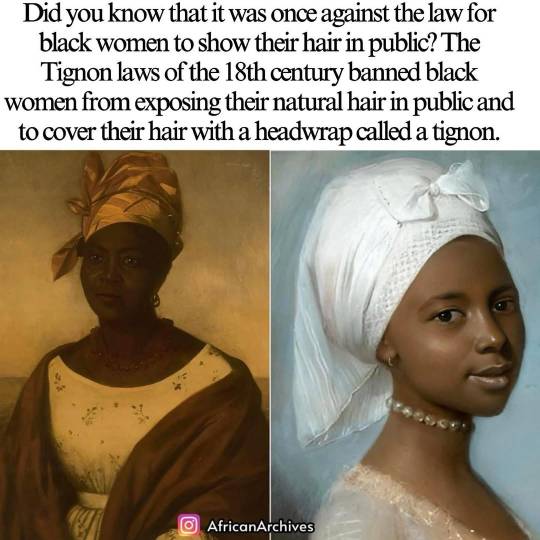
The Tignon laws of the 18th century were laws that banned black women from exposing their natural hair in public.
Their hairdos was obscuring the status of the white women and this threatened the social stability. The law would control colored women “who dressed too elegantly..”
Resembling today’s West African Gele, a tignon is a type of head-covering. It is a large piece of material wrapped or tied around the head to form a kind of turban concealing the hair.
Tignons were worn by free and slave Creole women of African descent in Louisiana from 1786. Historically, their prevalence was as a result of sumptuary laws passed in 1786 under Governor Esteban Rodriguez Miró.
These prescribed and enforced appropriate public dress styles for women of color in a white-dominated society. Hence, they were made as a way of regulating the appearance of black women in the U.S.
During the period, when black enslavement in America was at its peak, and places like New Orleans was unique in its high population of gens de couleur libres (free people of color), black women’s beauty and features often attracted white men who approached them as suitors.
This enraged white women who perceived them as competitors. Evidently, African women competed openly with white women through elegant dressing, including adorning their textured hair with gems, beads, and other accents that made them stand out from white women and possessing great beauty.
To take care of this perceived menace, series of sumptuary laws birthing the Tignon Law were put in place in order to stop white men from pursuing and engaging in affairs with women of colour, “while also being a class signifier,”
#black history#black women#black hair#naturalhair#natural hair#Tignon laws#its not just hair#black people#american history#headwraps#headwear#racism#oppression#discrimination#antiblackness#social issues#teamnatural#natural hair care#naturalhairhow101#history#african history#truth#perspective
590 notes
·
View notes
Text

URSULAAAAAA! Nobody can wear a huge dress like Cardi B! And I love the added touch of the matching tignon headdress! It's incredible!
790 notes
·
View notes
Text
since this is such an underresearched topic and i feel like bits of historical evidence could come from a very very wide breadth of sources, i’m reaching out to all the pdf lovers on tumblr: who here has any (reputable) sources that might mention how black people (socially, culturally, politically, etc) affected western fashion PRIOR to the jazz age???
#i will definitely be touching in the tignon laws as well as sarah bartman + the victorian bustle eras#but i’m just looking for more sources so i can build a concrete argument#winsome’s wailings#black history
31 notes
·
View notes
Text
Dr. Anna Julia Cooper was right! Bullies are cowards! Therefore, it's not immature to see racism as immature bullying!
Really think about it. Bullying often has tactics and attacks that destroy the human psyche as well as someone's self-esteem. It's on purpose. In my eyes, white people try to stroke their own egos by attacking the psyche of black people. Notice how anytime a black person gets any attention or black people end up making their own spaces due to lack of exposure or any representation, other races often lose their minds and become heavily offended by these moves... as if they don't have their own spaces to be vocal about... anything?
Like why do you CARE? Why DO they care? Why do they care enough to ruin your psyche? They can't even be proud of their own race without tearing down blackness. See how juvenile it is for blackness to make them uncomfortable.
Like let's bring in the tignon laws, the laws that forced black women to... cover their hair- okay lol. Very discriminatory law! But the juvenile reason for that law to take place was because white men, with their fetishizing selves, notice black women's hair way too easily and the white women weren't having that. Does that NOT sound juvenile?
Many people will state that white women were simply jealous of black women's hair and the attention they received for it, so their immature selves crafted a law that watered down black women's beauty. OVER JEALOUSY! I shouldn't have to ask anyone to think critically on how asinine this is! And black women STILL backslide when it comes to their own self-esteem because they hate themselves as well as their hair... when people care too much about it in the first place. And fetishization be damned, because our hair as well as our features, skin tone, and all, can be seen as beautiful regardless of how screwed up everyone's perception of us is.
And you wonder why I just LOOK down on racism.
Please learn to love yourselves. Feel SOME pride in many these idiots uncomfortable. If they thought critically, they'd go against tearing down black women and their blackness, but we live in an immature world where someone's ego has to be stroked through someone's misery... as if they even matter.
1 note
·
View note
Text





1 note
·
View note
Text
ghazal for nol collective, december 2023 elisa chavez
When I want to be a new woman, I try new clothes. They're a charm against sorrow. A passport, new clothes,
they're a sealskin that lets me slip out of a man's grasp, or a nation's. I wish, and my browser brews clothes.
Women long ago learned to hide stories in cloth. Think the tignon. Think occupied Paris. A used thobe,
in the right artist's hands, can smuggle history over borders. A miracle, like a few loaves.
Facing arrest, I slipped into my grandmother's jacket. I sang to the cops. No gun–I drew clothes.
The recipe calls for herbs I can't find. "Mulled wine: Gather star anise, orange zest, and whole stewed cloves."
In the aisle, I see the olive grove I googled– a woman's face, sobbing. She's frozen in new throes
of grief, embracing one ragged trunk like a child. Like a girl dragged on back of a bike to–who knows?
When speaking burns your fingers, you learn to forget. You blanch. That's how my family lost our true clothes.
Threads imply hands not so different than mine. I hold the seashell to my ear: Who are you, clothes?
After the village, its image persists in thread. It symbols, it banners. What can we do? Sow.
"Elisa, when the bombs fell, you bought new clothes?" I heart-garden. I carry. My blood warms new clothes.
Want to support Gaza weavers in their fight to preserve traditional textile techniques? You can do that at Nol Collective's GoFundMe for a workshop in Cairo. If you can't contribute, please consider signal-boosting.
About Nol Collective: Nol Collective is a conscious fashion collective that produces clothes, goods, and accessories rooted in traditional Palestinian crafts. "the hope is that our garments read like visual manuscripts, humanizing and narrating the collective labor of love behind a garment and the triumph of creativity and heritage in the face of struggle."
Shop at nolcollective.com/
166 notes
·
View notes
Note
Hi!
Firstly, thank you for everything you're doing, and all the resources. They're so interesting and useful. And I really appreciated the favourite Black character showcase, and not just so I could share my favourite characters with everyone lol.
Secondly, I have a question about my own worldbuilding. It's a fantasy, and the royal family of one of the kingdoms is Black. At the moment I have a tentative idea to have it as part of their culture for the king and queen specifically to cover part of their hair, to symbolise that they're ready to go and help the kingdom at a moment's notice, even at night. Even when they're woken up from sleep. My idea is that the king's hair kind of looks like a cross between these two photos (first for his hairstyle, second for his headwrap style):


It's only the ruling monarch/s that do this – their direct heir will at a certain age start wearing translucent partial head coverings on special occasions, but nothing opaque or at all times in public until they're the monarch. None of the other royals do. One of the main characters in my story is the second eldest princess, who's about 18-ish and doesn't cover her hair, and nor do either of her younger sisters (one of whom is in the story quite a lot) (the other main character is the white queen of another kingdom, about the same age, and they don't cover their hair there, if that's any useful context – there's a number of Black characters too who don't cover their hair).
I know there used to be laws forcing the covering of Black people's hair in some places, and with the discrimination surrounding Black hair too, I'm wondering whether it would be racist or anything inappropriate to have something like this? Or if I'm overthinking it?
(I'd also appreciate it if you could just give me a yes/hell no on the hairstyle itself too if you have a chance.)
(also I'm either terrible at searching or preaching to the choir here but it's so hard to find images of black men in headwraps on duckduckgo, seriously. And sorry for the long ask! I appreciate it if you answer this and dw if you don't want to/can't.)
You chose two fine ass men 😭 Oooh I love a man in a turban. Gorgeous. I love both styles. And head coverings and scarves are also a positive part of Black beauty cultures internationally! Nigerian women will wear the finest of head wraps for special events, I love seeing the styles. So ofc it wouldn't be an issue.
It's not that hair is being covered that was what made the Tignon laws (what you're talking about) racist, it was the reason why they were being forced to cover their hair. If that is not what you're depicting (without intent to show discrimination) then you're fine. You seem to be doing it as a sign of royalty and devotion to one's kingdom. That sounds honorable to me.
43 notes
·
View notes
Text


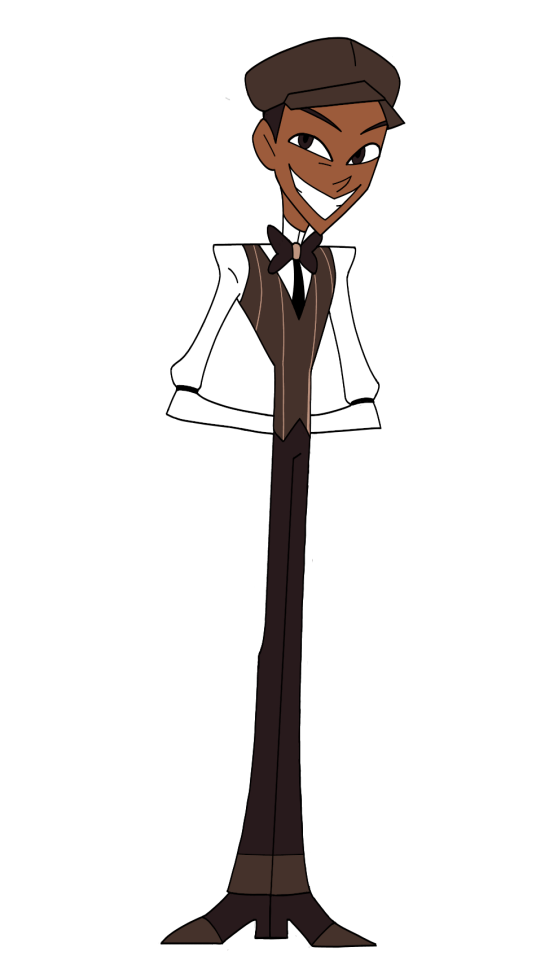

Human Alastor (FTM trans headcanon)
Full size image
Commentary below:
Here, Alastor is shown at four different stages of his human life:
Childhood - around 12 years old
“Voodoo Killer” - late teenage years
Jazz Musician - early 20s
Radio Star - later adulthood to time of death
His career as a serial killer started when he was around 12 years old and continued up until his death.
The three stages of his adult life are supposed to correspond with different aspects of his demon form’s hairstyle.
During the “Voodoo Killer” stage, he straightened his hair and styled it similarly to his demon form’s hairstyle. However, he did not have an undershave. If viewed from the back, it would look like a simple bob. His appearance is inspired by Clementine Barnabet. I intended for his tignon to be tied in a similar manner to Clementine’s. Additionally, the bandages wrapped around his legs are meant to make him look a little like Voodoo Queen Lala from the 1930s. I gave him bandages instead to make him look like more of an edge lord (lol). The cross worn was originally his mother's. After she died, he painted it black in mourning. He wears it at all times, up until his death, to remember her.
During the “Jazz Musician” stage, he kept his hair short in order to pass for male. This is supposed to correspond with the back side of Alastor’s demon form, which is shaved short. His appearance is inspired by Jelly Roll Morton, one of my favorite Jazz musicians, who also happens to be Creole. Not visible in this pose, but Al wore black gloves that match the color of his hair.
During the “Radio Star” stage, several aspects of Alastor’s appearance are inspired by the late, great Cab Calloway. Like Cab, Alastor styled his hair in a conk. His suit is also inspired by the iconic white suit worn by Cab Calloway.
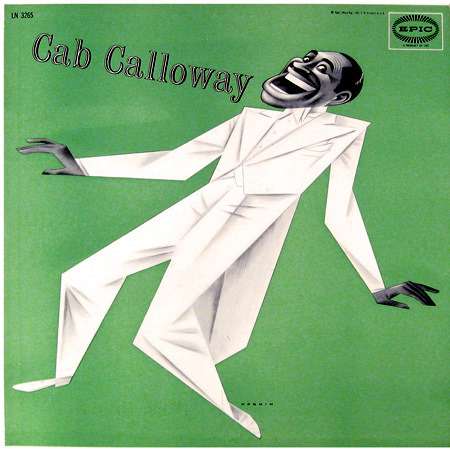
That being said, creative liberties were taken with Al’s white suit, which is anachronistic for the 1930s. Cab famously wore zoots, but I don’t think that would be Alastor’s style. Since I know so little about 1930s fashion, I gave up and didn’t attempt to give him a historically accurate suit. Instead, his tuxedo is based on the one he wore in the pilot. There are several anachronisms present in Alastor’s canon design, so it might actually fit his character to wear a suit atypical of the 1930s. This could preserve the otherworldly, “Willy Wonka”-esque presence that he has, even on Earth. Still, it’s a pretty glaring historical inaccuracy. Once we get to see Al’s canon human form, I might redesign him.
Since Alastor would have more than one suit, I didn’t worry too much about the inaccuracies present in his clothing. The one thing I refused to compromise on was his microphone. In the TV show, Alastor’s iconic microphone is a vintage ribbon mic. However, this “pill capsule” style looks more similar to models that were only invented after Alastor’s death. Here’s an example of a ribbon mic that was rolled out shortly before Alastor’s death: The RCA Type 77-A. As you can see, it’s a lot larger in size than Alastor’s microphone.
My first attempt at drawing human Alastor gave him a ribbon mic, seen here: https://www.deviantart.com/thegirlwhodidntsmile/art/Human-Alastor-ribbon-mic-1035514228
In order to be more historically accurate, I discarded this design. Instead, I gave him a spring microphone, technology that is more iconic of the 1920s/1930s.
Here’s an image of Cab Calloway in front of a spring microphone, one year after Alastor’s death:

I took some creative liberties with the flag of Alastor’s microphone. Normally, it is supposed to say the radio station. Since I don’t know what radio station Al’s show aired on, I just had it read “ON AIR” in red.
Importantly, Alastor’s suit has to match the design of his microphone, which is an extension of himself.
It’s a little awkward how Alastor is holding his microphone, so here is how it looks from the back: https://www.deviantart.com/thegirlwhodidntsmile/art/Human-Alastor-back-of-mic-1035514255
The backside of the microphone is supposed to look like an eye, and have a bit of an ominous presence.
A headcanon I have is that Alastor had a severe case of stress-induced vitiligo. Because he was very egotistical, this was a source of shame for him, so he hid it with makeup and clothing. Here is how his face would have appeared shortly before his death: https://www.deviantart.com/thegirlwhodidntsmile/art/Human-Alastor-no-makeup-1035514264
Al’s colors are mostly browns, whites, and black, to keep with the deer theme. The black tips of his shoes are supposed to look a bit like deer hooves. I pictured his height as 5’10, one inch taller than Michael Dillon. Since the average male height was around 5’7, Al was still taller than most men, which made it easier to pass for male.
In addition to Clementine Barnabet, Jelly Barnabet, and Cab Calloway, FTM Al’s appearance is largely inspired by the famous biracial drag king Stormé DeLarverie.

I picture Alastor having a darker complexion than Stormé, or Cab Calloway for that matter. Compared to Stormé, his nose and eyes are different (his eyes are supposed to have the same shape as his mother’s. distinctly African, not European at all) but his mouth, jawline, and overall facial structure are similar. He’s basically supposed to be a much less white-passing version of Stormé DeLarverie. Because he was born around year 1900, Al would not have had access to any form of medical transition. He would be physically indistinguishable from a cisgender drag king.

I also picture his physical build being pretty similar, but he’s taller (I’m not sure how tall Stormé was, but I don’t think she was 5’10) and skinnier. He’s supposed to have a really striking appearance, where he’s really slender but really tall for someone born in his time, and he has an androgynous face.
In my more recent drawings, the drag king Alberta “Bert” Whitman has also served as visual inspiration for human Alastor:
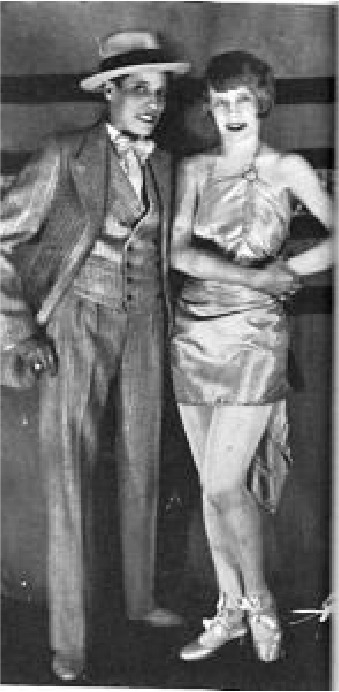
Bonus image:
https://www.deviantart.com/thegirlwhodidntsmile/art/Alastor-kill-count-1035514155
#hazbin hotel#alastor#hazbin alastor#hazbin hotel fanart#trans alastor#ftm alastor#there are several allusions to real people in these designs. read commentary to learn more or try to guess them without looking#ftm al#human alastor
81 notes
·
View notes
Text
Ecto-Implosion Time! (3/3)
Take The Stars And Show Them How To Glow by @ikiracake
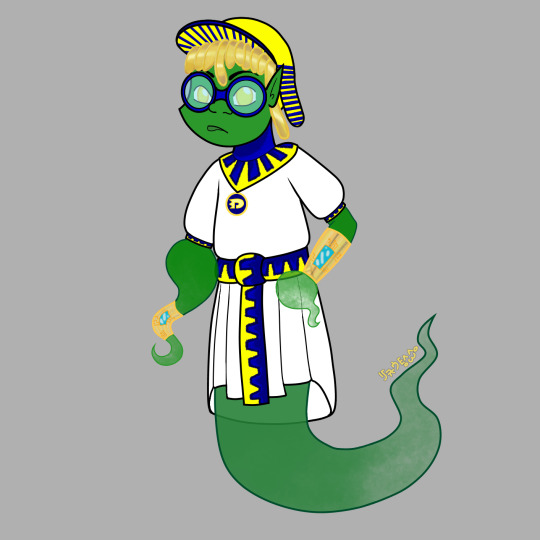
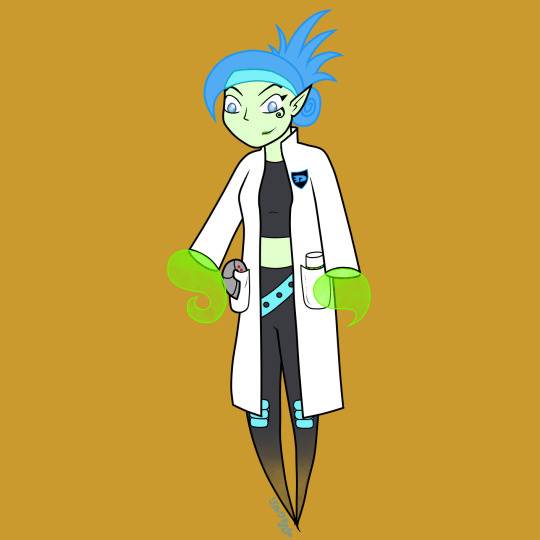
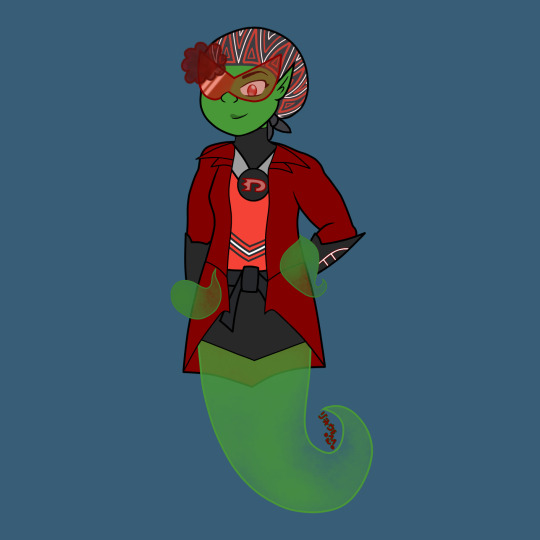
The only thing that came to my mind to comment this post was this meme (sorry not sorry 🤣):

At long last, everyone at full power!!
...or are they?
Spoilers/Trivia under the cut!
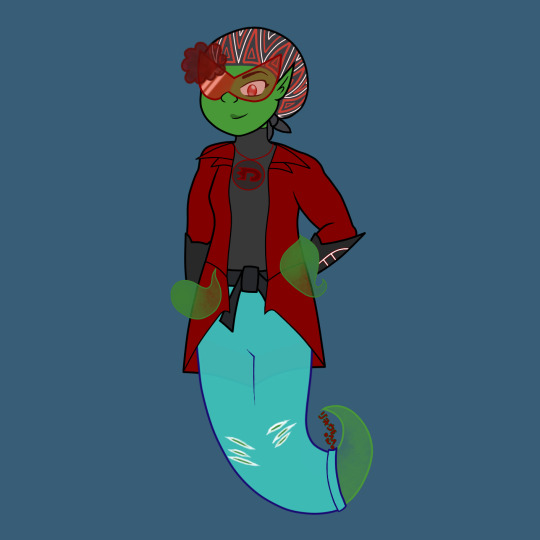
At long last, Val my gal at Full Powaaaaaa!
(๑˃ᴗ˂)ﻭ
The initial reasoning for Val taking so long to reach her full potential came from a brainstorming sesh on the EI server with the other artists, because I had no Idea how to design the Final Form.
Everyone had their interests and quirks fitted in their outfits and designs, but Val was just in an alt version of her Huntress suit! ( ≧Д≦)
Due to poor show planning choices, canon Valerie Gray has no interests, hobby or little details to make her a well-rounded character other than a martial art expert who could kick your ass into the next week and used to be a snob/A-Lister.
Yes, that made her a blank slate to paint in any way I desired, but it was completely unfair to her!
But then @faerynova gave me the nudge I needed to think deeper into her character:
consider: valerie herself doesn't know because she painted her entire identity around being an a-lister and fitting in and then around revenge and by god does she need to sit down and figure out what she enjoys and how to enjoy things for herself
That made me think back of a past fic of mine, where Val's Grandma was from New Orleans (thus the jacket and the tignon headwrap).
AND THEN!
Valerie Gray is a Pro with her Hoverboard. It wouldn't be too much of a leap for her to start skateboarding for a challenge, since the laws of physics are more pressing with "analogic" tools instead of "cheating" with ghost-related ones.
So, Skater Girl Val! 🙌
As for Tucker, like I said in the previous post, this was his original-do, because my man deserves his past power-ups to be recognized!
(๑•̀ㅂ•́)و✧
And last, but not least, Jazz!
She's a teenager, she deserves to act and look like it!
Thus Ember-style makover, still retaining her science roots and interest, but not chained by them.
(◡̀_◡́)
I think that this is all, for now.
This @ecto-implosion was a blast, I had so much fun working with Ikira (thank you again for choosing me! 😊) and I cannot wait to see what next year has in store!
Happy Imploding Everyone!
(ノΦωΦ)ノ*.✧
#the dragon draws#danny phantom#ectoimplosion#ectoimplosion24#tucker foley#jazz fenton#valerie gray#sam manson#wes weston#danny fenton#dani phantom#original ghost villain#magical girl au#full power#this event is so fun#little baby man#maybe one day I'll make the villain as well#but now I'm eepy#so maybe next time
15 notes
·
View notes
Text

the 4 L's jamari taylor
according to the artist statement this references the tignon law of 1700s new orleans requiring black women to cover their hair, and the pride that modern black women feel in their hair and their self-expression
11 notes
·
View notes
Text
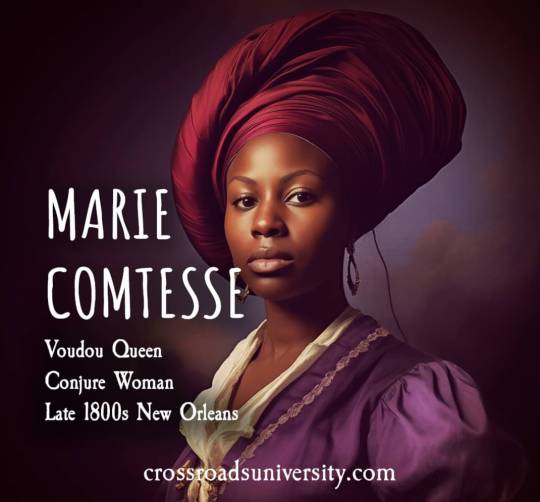
Who's Who in Hoodoo History: Marie Comtesse
Marie Comtesse was a trailblazer in the late 19th-century New Orleans Voudou scene, garnering remarkable acclaim for her mastery in the Voudou arts. Picture this: a formidable figure with a robust physique and piercing moon-shaped eyes that captured attention wherever she went. According to Voudou Queen Lala, Marie Comtesse was more than just a healer; she was a Queen, telling fortunes, securing employment for folks, and performing sacred works with unparalleled finesse. But that's not all—her attire was legendary! Draped in a majestic purple gown paired with a striking red tignon, she exuded power and mystique. And her conjure powders? Stored in a pristine white bag. But here's the captivating part: her ceremonies were a spectacle, akin to a dazzling stage production! Transforming her outfits like a skilled actress, she'd start in black, transition to white, and conclude in a mesmerizing blue ensemble. She wasn't just a spiritual leader; she was a vision, captivating male gazes with her jet-black allure and stunning fashion sense. And let's talk about her ceremonies - she glamoured her congregation by employing youthful, stunningly beautiful, Creole women dancers, igniting the imaginations of onlookers. Marie Comtesse had exceptional knowledge of powders and roots, acquired when she was a member of Marie Laveau’s congregation.
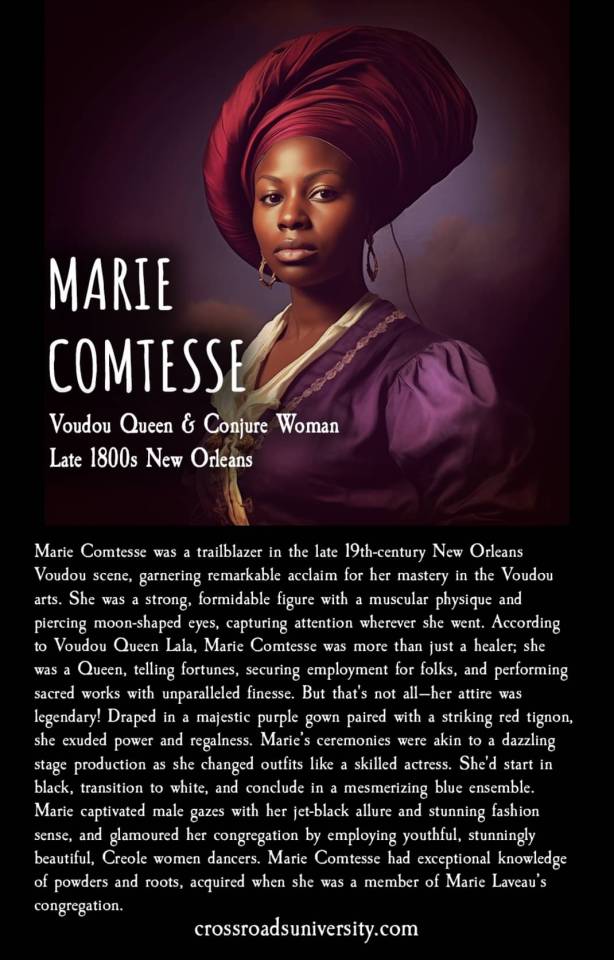
If you enjoyed this post and would like to support my endeavors for documenting these amazing people in Hoodoo history in the form of a book and cards, please check out my Patreon page: https://www.patreon.com/denisealvarado
If you would like to learn more about the ancestors of the Hoodoo, Voudou, conjure, and rootwork traditions, consider taking the course Who's Who in Hoodoo History where you will learn ALL the tea. Get to know the real people, the forgotten ones, the famous, and the infamous, foremothers and forefathers who passed down their knowledge to the tradition keepers of today. https://www.crossroadsuniversity.com/courses/who-s-who-in-hoodoo-history
#hoodoo#rootwork#conjure#neworleansvoodoo#creolemoon#witchcraft#authordenisealvarado#crossroadsuniversity#new orleans voodoo#whoswhoinhoodoohistory#marielaveau
46 notes
·
View notes
Text
tignon law of 1786
in louisiana, during the 18th century, a law was passed in order to outcast and oppress black women of color by forcing them to cover their hair with scarves. this was due to the fact that white people (especially women according to online sources) were jealous of their hair because of how eye-catching it was, so it led to african american women’s hair getting regulated. this led to women becoming creative and finding ways to make the scarves beautiful and still be following the law, which didn’t end until 1803. the tignon law is just another example of poc getting oppressed because of an unfair and biased legal system.
#passion project#high school#usa#history#lawblr#equal rights#explore#lawyer#discover#law#politics#women#african american#black women#blacklivesmatter#african beauty#african women#african american history#african american culture#african american women#black culture#women of color#african american spirituality#laws#lawsuit#law school#lawsuits#union square#university#united states
40 notes
·
View notes
Photo

Cécile wears a tignon on the cover of Troubles for Cécile, and I wish they’d included one in her collection, even though I guess they were more typically worn by adult women instead of little girls. Tignons are fascinating. They started out as a fairly straightforward way for enslaved women to protect their hair and keep it out of their way as they worked. Soon, laws were enacted declaring that enslaved women were required to cover their heads with tignons as a sign of their lower status. The women who wore them however refused to be demeaned, and turned their tignons into huge, elaborate, and colorful headpieces that they wore with pride.

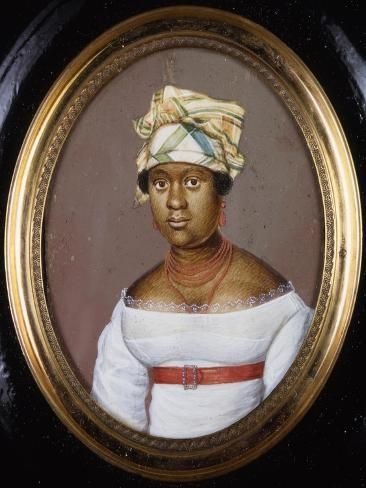
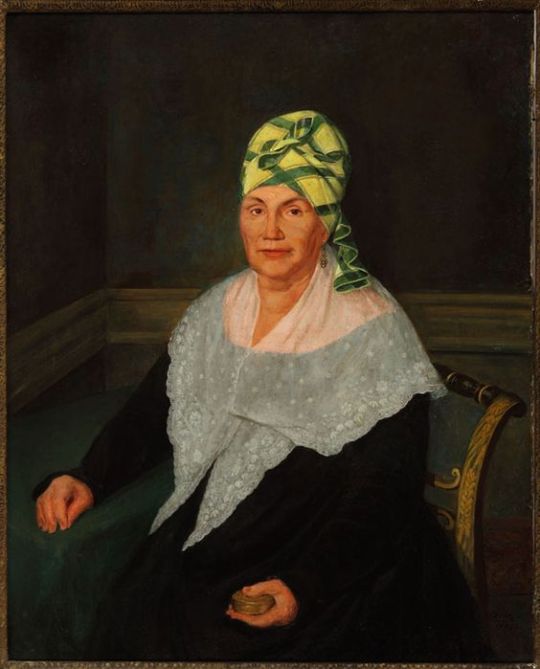

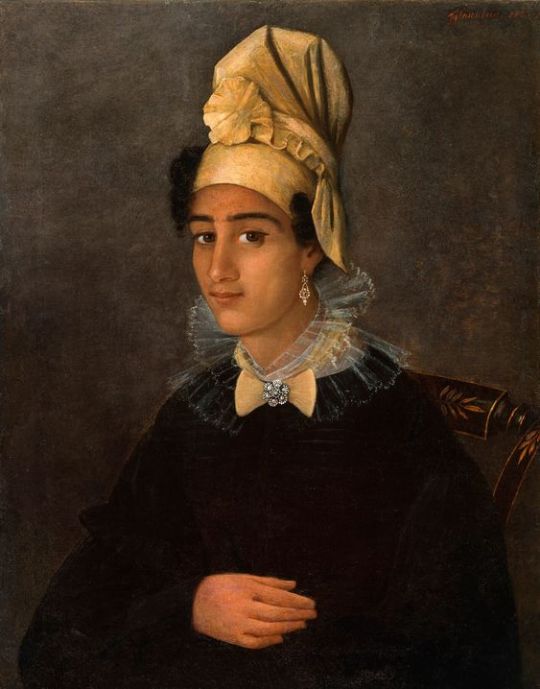
Even the voodoo queen HERSELF, Marie Leveau rocked a tignon:

(okay so that painting is actually most likely NOT an actual portrait of Mme Leveau, but she still wore a tignon!)
188 notes
·
View notes
Text
only i would be dumb enough to go on a history research trip to new orleans with literally $35 in my bank account
#but my plane tickets have already been purchased so!! if you wanna send funds the tip button is in my bio 😎#i’m going down there to research the tignon laws for my senior thesis#which is on how black people affected western fashion hostorically#winsome’s wailings#historical fashion
16 notes
·
View notes